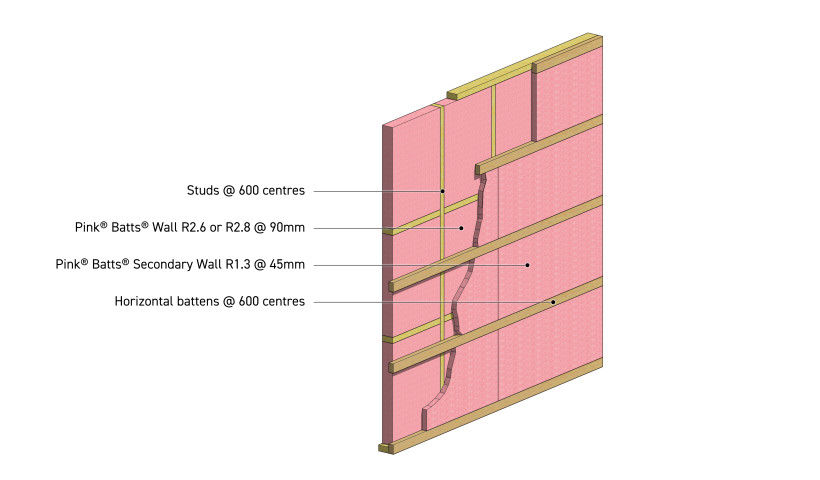
Timber is an excellent and easy to use sustainable building material that can be found around New Zealand and has been supplied to builders for decades. Due to thermal bridging, there is a direct correlation between the actual construction R-value and amount of timber within the wall framing. Thermal bridges are materials or elements that are better at conducting heat.
The introduction of the 5th edition of H1 included significant changes to insulation requirements in ceilings, however, there have been minimal changes to wall requirements.
“Professionals within the industry have continued to express their concerns around the minimal changes to wall requirements and the risk of over insulating our ceilings, the source of around 40% of heat loss, while not properly addressing the 20% of heat loss in walls,” say Comfortech Building Performance and Technical Manager Todd Lindsay.
To support, Comfortech have developed a Secondary Layer Insulation Wall Solution. This solution enables the delivery of a 90mm timber frame wall, with a secondary insulation layer between 45mm thickness internal battens to deliver a thermal performance which exceeds that of a 140mm R4.3 Pink Batts by around 20%. This Secondary Layer Wall solution will also assist with avoiding the supply constraints, additional costs and maintains the bracing performance of the internal lining.
A 90mm frame wall with 30% framing and R2.8 Pink Batts, with a secondary insulation layer of R1.3 between 45mm battens will achieve a construction R-value of R3.3, versus a 140mm wall frame, also at 30% framing which achieves only R2.72.
In designing walls, H1 requires you to only consider the top and bottom plate studs and nogs, however, the BRANZ Beacon Pathway report (ER53) notes that the average amount of framing in new build walls is around 34%. This amount of timber can lead to significant challenges around heat loss, through thermal bridging decreasing the overall thermal performance and increasing the in-use energy demand of the build. For example, with 34% framing an R2.8 Pink Batts wall insulation will not enable the wall to deliver the requisite R2.0 under the Schedule Method.
“To address this imbalance, solutions are needed to provide substantive increases in wall R-values. In turn, this would allow us, under the Calculation or Modelling method, to reduce the R-value of our ceilings — particularly in the milder climate zones — and deliver balanced, energy-efficient, more comfortable homes, year-round."
As the business that brought edge compression to avoid raised heels, and which is continuing to drive consideration around perimeter ventilation of roof spaces, we are committed to delivering market leading performance in residential walls,” says Todd.
More information on the Comfortech Secondary Insulation Layer Wall Solution can be found under ‘wall insulation solutions’ at H1Done.co.nz













 Case Studies
Case Studies














 Popular Products from Comfortech Building Performance Solutions
Popular Products from Comfortech Building Performance Solutions


 Posts by Comfortech Technical
Posts by Comfortech Technical Most Popular
Most Popular


